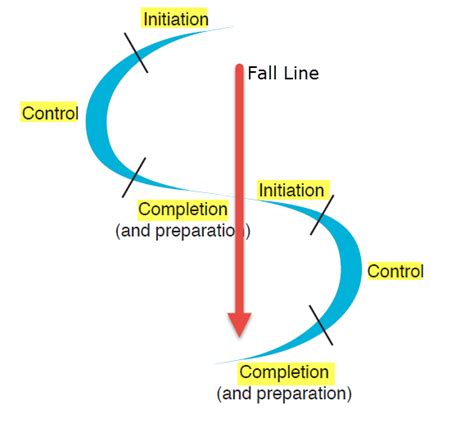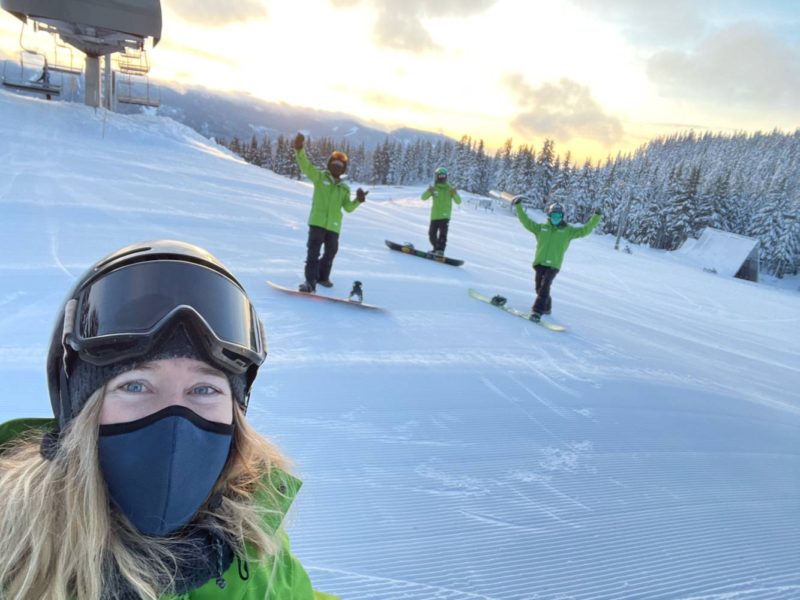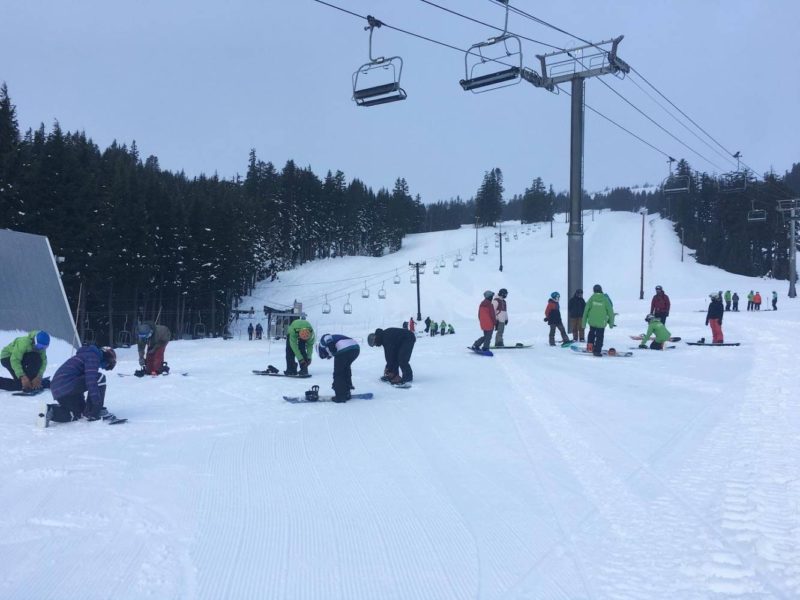Mt. Hood Meadows Snowboard Training
Snowboard Clinics and Ongoing Education
Our goal is to provide the best possible training to help you with ongoing education and be successful in exam preparation.
We provide on-snow training along with utilizing visual media through video and movement analysis, assessment of PSIA/AASI materials, and others, much of it through Zoom and e-learning materials through the “Covid Era”.
Every clinic you take will improve your own riding. We also give you the tools necessary to make an exceptional lesson each and every time. This is life-long learning, and it’s FREE.
What Does PSIA/AASI Mean For You??
PSIA (Professional Ski Instructors of America) and AASI (American Association of Snowboard Instructors) is a national organization recognized and utilized by hundreds of resorts around the United States.
Mt. Hood Meadows is a PSIA/AASI certified snowsports school. We are the largest school in the Northwest with an impressive array of divisional staff, tech team members, examiners, and others. There is no better place to train as a snowboarder than here at Mt. Hood Meadows!
10 Reasons For Certification
1. Wage Bump!!! (SEE THE MATRIX HERE)
2. Endless lessons to become a better rider
3. Bomb-proof instructor = better tips
4. Get assigned to better lessons
5. Transferable to other resorts
6. Access to education materials
7. Have you seen Stormey’s pin collection?
8. Massive deals on outdoor gear
9. Discounts at non-NW resorts
10. Bestest everest training with new friends
Meadows Snowboard Exam Prep
Exam preparation is a large part of our training program at Meadows. You will see many clinics dedicated to different aspects of what makes up a successful PSIA/AASI exam candidate. Click in the sidebar for the resources available for each level of certification offered by AASI-NW.
10 Tips For Great Exam Prep
1. Find your training crew
2. Motivate each other to ride more!
3. Practice your tech knowledge
4. Actually read the manuals
5. Speak the jargon out loud
6. Ride the tasks everyday
7. Get lots of video & do MA
8. Ride switch (scare yourself just a little)
9. Write out the progressions
10. Teach to your peers
Reading Materials
Most of our training manuals are found in print, digital, or as an audiobook. These are only available to PSIA/AASI members:
Snowboard Technical Manual – Free Digital Copy!
Snowboard Teaching Manual
Teaching Snowsports Manual – Free Digital Copy!
Children’s Instruction Manual
Freestyle Technical Manual
Fitness for Skiing & Snowboarding (FREE)
Snowboarding Movement Analysis Concepts
Movement Analysis is a process of watching and describing:
1. The Rider’s Movement
2. The Tool’s Performance
3. The Snow Track
While watching our students, we may break MA down into three ways:
1. Observation – what is happening
2. Evaluation – why is it happening
3. Prescription – how to fix something
Using Movement Analysis, we can break down movements into digestible portions to enhance our students’ lessons by complimenting on what they are doing well, connecting actions and consequences, and eventually focusing on ways to improve things they might need work on.
Ranges of Motion
Our Joints and Muscles can do 2 THINGS:
-
Flex/Bend vs Extend/Straighten
-
Rotate
That’s it! In order to make our tool do what we want, we have to know what our body is capable of.
Can you explain it just using body mechanics? “I want to make my board twist by bending my front ankle, knee, and hip…”
Board Performance Concepts
As a result of things your body can do, we can manipulate the board in 4 basic ways:
-
TWIST
-
TILT
-
PIVOT
-
PRESSURE
-
Fore-aft
-
Magnitude (Up/Down)
-
Heel-Toe
-
Turn Descriptors
We can describe any turn that we look using these descriptors:
-
Normal or Switch
-
Static or Dynamic
-
Open or Closed
-
Symmetrical or Asymmetrical
-
Small, Medium, Large Radius
-
Carved or Skidded
-
Upper/Lower Body Separation
KNOW YOUR SNOWBOARD FUNDAMENTALS
-
Manage the board’s pivot through flexion/extension/rotation of lower body, together with, separate from, or in opposition to the upper body
-
Manage edge angles through a combination of inclination and angulation
-
Manage torsional flex of the board using independent or simultaneous flexion/extension of lower body joints
-
Manage the relationship of the CM to the base of support to direct pressure along the length of the board
-
Manage the relationship of the CM to the base of support laterally to direct pressure across the width of the board
-
Regulate magnitude of pressure created through board/surface interaction
Phases of a Turn




